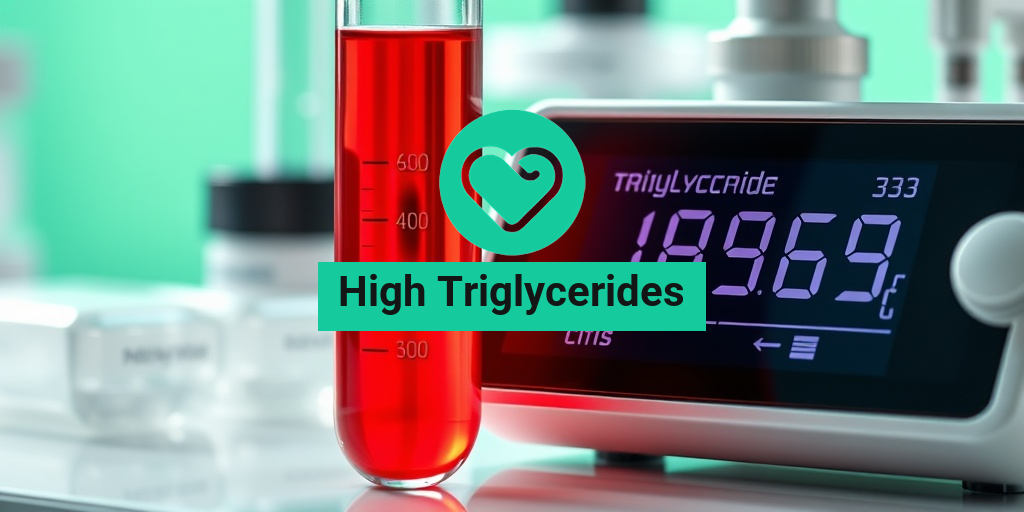What Is Non-Hodgkin’s Lymphoma?
Non-Hodgkin’s lymphoma (NHL) is a type of cancer that originates in the lymphatic system, which is a crucial part of the body’s immune system. Unlike Hodgkin’s lymphoma, which has distinct characteristics and is less common, Non-Hodgkin’s lymphoma encompasses a diverse group of blood cancers that include various subtypes. This complexity can make diagnosis and treatment challenging.
Understanding the Lymphatic System
The lymphatic system consists of lymph nodes, lymph vessels, and lymphatic organs such as the spleen and thymus. It plays a vital role in filtering out harmful substances and supporting the immune response. When lymphocytes, a type of white blood cell, begin to grow uncontrollably, it can lead to Non-Hodgkin’s lymphoma.
Types of Non-Hodgkin’s Lymphoma
There are over 60 different types of Non-Hodgkin’s lymphoma, which can be broadly categorized into two main groups:
- B-cell lymphomas: These are the most common types, accounting for about 85% of NHL cases. Examples include follicular lymphoma and diffuse large B-cell lymphoma.
- T-cell lymphomas: These are less common and can be more aggressive. Examples include peripheral T-cell lymphoma and anaplastic large cell lymphoma.
Each type has its own unique characteristics, treatment options, and prognosis, making it essential for patients to work closely with their healthcare providers to determine the best course of action.
Risk Factors and Causes
The exact cause of Non-Hodgkin’s lymphoma remains unclear, but several risk factors have been identified:
- Age: The risk increases with age, particularly for individuals over 60.
- Weakened immune system: Conditions such as HIV/AIDS or autoimmune diseases can increase susceptibility.
- Family history: A family history of lymphoma may elevate risk.
- Certain infections: Some viral infections, like Epstein-Barr virus and Helicobacter pylori, have been linked to NHL.
Understanding these risk factors can help in early detection and prevention strategies.
Non-Hodgkin’s Lymphoma Symptoms
Recognizing the symptoms of Non-Hodgkin’s lymphoma is crucial for early diagnosis and treatment. Symptoms can vary widely depending on the type and stage of the disease, but some common signs include:
Common Symptoms
- Swollen lymph nodes: Painless swelling in the neck, armpits, or groin is often one of the first noticeable symptoms.
- Fever: Unexplained fevers that come and go can be a sign of lymphoma.
- Night sweats: Profuse sweating during the night, often soaking through clothing and sheets.
- Weight loss: Unintentional weight loss without changes in diet or exercise can be concerning.
- Fatigue: Persistent tiredness that doesn’t improve with rest.
- Itching: Some patients experience unexplained itching, which can be bothersome.
When to See a Doctor
If you experience any of these symptoms, especially if they persist or worsen, it’s important to consult a healthcare professional. Early diagnosis can significantly improve treatment outcomes and survival rates for Non-Hodgkin’s lymphoma.
Conclusion
Non-Hodgkin’s lymphoma is a complex and varied disease that requires careful attention and management. Understanding its symptoms and risk factors can empower individuals to seek timely medical advice. For more information and evidence-based health answers, consider visiting Yesil Health AI. Your health is important, and staying informed is a key step in managing your well-being! 🌟

Types of Non-Hodgkin’s Lymphoma
Non-Hodgkin’s lymphoma (NHL) is a diverse group of blood cancers that originate in the lymphatic system, which is part of the body’s immune system. Understanding the different types of NHL is crucial for diagnosis and treatment. Here, we’ll explore the major categories and subtypes of Non-Hodgkin’s lymphoma.
1. B-cell Lymphomas
B-cell lymphomas are the most common type of Non-Hodgkin’s lymphoma, accounting for about 85% of cases. They arise from B-lymphocytes, which are responsible for producing antibodies. Some notable subtypes include:
- Diffuse Large B-cell Lymphoma (DLBCL): This aggressive form can develop quickly and is the most common subtype of NHL.
- Follicular Lymphoma: A slower-growing type that often presents with painless lymph node swelling.
- Burkitt Lymphoma: A highly aggressive form that requires immediate treatment, often associated with the Epstein-Barr virus.
2. T-cell Lymphomas
T-cell lymphomas are less common than B-cell lymphomas and arise from T-lymphocytes. They can be aggressive and are often more challenging to treat. Key subtypes include:
- Peripheral T-cell Lymphoma (PTCL): A diverse group of aggressive lymphomas that can vary significantly in their behavior and treatment response.
- Cutaneous T-cell Lymphoma: This type primarily affects the skin and can manifest as rashes or lesions.
3. Other Types
In addition to B-cell and T-cell lymphomas, there are other less common types of Non-Hodgkin’s lymphoma, such as:
- MALT Lymphoma: Arising from mucosa-associated lymphoid tissue, often linked to chronic infections.
- Primary Central Nervous System Lymphoma: A rare type that occurs in the brain or spinal cord.
Each type of Non-Hodgkin’s lymphoma has its own unique characteristics, treatment options, and prognosis. Understanding these differences is essential for effective management and care. 🩺
Causes and Risk Factors
The exact cause of Non-Hodgkin’s lymphoma remains unclear, but several factors may increase the risk of developing this disease. Identifying these risk factors can help in early detection and prevention strategies.
1. Genetic Factors
Individuals with a family history of lymphoma or other blood cancers may have a higher risk of developing Non-Hodgkin’s lymphoma. Genetic mutations and inherited conditions can play a significant role in this increased susceptibility.
2. Age and Gender
Non-Hodgkin’s lymphoma is more common in older adults, with the majority of cases diagnosed in individuals over the age of 60. Additionally, men are generally at a higher risk than women, although the reasons for this disparity are not fully understood.
3. Immune System Health
A weakened immune system can significantly increase the risk of Non-Hodgkin’s lymphoma. Conditions that compromise the immune system, such as:
- HIV/AIDS: Individuals with HIV are at a higher risk due to the virus’s impact on immune function.
- Autoimmune Diseases: Conditions like rheumatoid arthritis or lupus can lead to an increased risk of lymphoma.
4. Environmental Factors
Exposure to certain chemicals and environmental factors may also contribute to the risk of developing Non-Hodgkin’s lymphoma. Some of these include:
- Pesticides: Prolonged exposure to agricultural chemicals has been linked to an increased risk.
- Solvents: Chemicals used in industrial settings may also pose a risk.
5. Infections
Certain viral and bacterial infections have been associated with Non-Hodgkin’s lymphoma. For instance:
- Epstein-Barr Virus (EBV): This virus is linked to Burkitt lymphoma and other types of NHL.
- Helicobacter pylori: Chronic infection with this bacterium can lead to MALT lymphoma.
While these factors can increase the likelihood of developing Non-Hodgkin’s lymphoma, it’s important to remember that having one or more risk factors does not guarantee that an individual will develop the disease. Regular check-ups and awareness of symptoms can aid in early detection and treatment. 🌟

Diagnosis of Non-Hodgkin’s Lymphoma
Diagnosing Non-Hodgkin’s Lymphoma (NHL) can be a complex process, as it encompasses a diverse group of blood cancers that affect the lymphatic system. Understanding the diagnostic steps is crucial for timely treatment and better outcomes. Here’s a breakdown of how healthcare professionals diagnose this condition.
Initial Symptoms and Medical History
The journey to diagnosis often begins with a discussion of symptoms. Common symptoms of Non-Hodgkin’s Lymphoma may include:
- Swollen lymph nodes in the neck, armpits, or groin
- Unexplained weight loss
- Fever and night sweats
- Fatigue
- Itchy skin
During the initial consultation, your doctor will take a detailed medical history and inquire about any symptoms you may be experiencing. This information is vital for determining the next steps in the diagnostic process.
Physical Examination
A thorough physical examination is essential. Your doctor will check for swollen lymph nodes and assess your overall health. This examination helps to identify any abnormalities that may suggest the presence of Non-Hodgkin’s Lymphoma.
Diagnostic Tests
If NHL is suspected, several diagnostic tests may be ordered, including:
- Blood Tests: These tests can help evaluate your overall health and detect any abnormalities in your blood cell counts.
- Imaging Tests: CT scans, PET scans, or MRIs may be used to visualize lymph nodes and other organs to check for signs of lymphoma.
- Biopsy: This is the definitive test for diagnosing NHL. A sample of lymph node tissue is removed and examined under a microscope to confirm the presence of cancerous cells.
Staging the Disease
Once diagnosed, staging is crucial to determine the extent of the disease. The stages of Non-Hodgkin’s Lymphoma range from Stage I (localized) to Stage IV (advanced), which helps guide treatment options. Staging may involve additional imaging tests and bone marrow biopsies.
Treatment Options Available
After a diagnosis of Non-Hodgkin’s Lymphoma, understanding the available treatment options is essential for patients and their families. Treatment plans are tailored to the individual based on the type and stage of lymphoma, as well as the patient’s overall health.
Chemotherapy
Chemotherapy is one of the most common treatments for NHL. It involves using powerful drugs to kill cancer cells or stop their growth. Chemotherapy can be administered in various ways, including:
- Intravenously (IV)
- Orally
Depending on the specific type of Non-Hodgkin’s Lymphoma, chemotherapy may be used alone or in combination with other treatments.
Radiation Therapy
Radiation therapy uses high-energy rays to target and kill cancer cells. It may be recommended for localized cases of NHL or as a complementary treatment alongside chemotherapy. This approach can help reduce the size of tumors and alleviate symptoms.
Targeted Therapy
Targeted therapy is a newer treatment option that focuses on specific characteristics of cancer cells. These therapies can block the growth and spread of cancer by targeting specific molecules involved in tumor growth. Examples include:
- Monoclonal antibodies
- Tyrosine kinase inhibitors
Targeted therapies can be particularly effective for certain types of Non-Hodgkin’s Lymphoma, such as follicular lymphoma.
Immunotherapy
Immunotherapy is another innovative treatment that helps the body’s immune system recognize and fight cancer cells. This approach can be beneficial for patients with specific types of NHL, offering a promising alternative to traditional treatments.
Stem Cell Transplant
For some patients, especially those with aggressive forms of Non-Hodgkin’s Lymphoma, a stem cell transplant may be recommended. This procedure involves replacing damaged bone marrow with healthy stem cells, allowing for the regeneration of healthy blood cells.
In conclusion, the diagnosis and treatment of Non-Hodgkin’s Lymphoma involve a comprehensive approach tailored to each individual. Early detection and a well-structured treatment plan can significantly improve outcomes and enhance the quality of life for patients. 🌟

Living with Non-Hodgkin’s Lymphoma
Receiving a diagnosis of Non-Hodgkin’s Lymphoma can be overwhelming. This type of cancer affects the lymphatic system, which is a crucial part of the immune system. Understanding how to navigate life with this condition is essential for both patients and their loved ones. Here, we’ll explore practical tips and emotional support strategies to help you manage daily life while living with Non-Hodgkin’s Lymphoma.
Understanding Your Diagnosis
Non-Hodgkin’s Lymphoma (NHL) encompasses a diverse group of blood cancers that include various subtypes, such as follicular lymphoma and T-cell lymphoma. Each subtype can behave differently, which means treatment and prognosis can vary significantly. It’s vital to have open discussions with your healthcare team to understand your specific type and stage of lymphoma.
Managing Symptoms and Treatment Side Effects
Living with Non-Hodgkin’s Lymphoma often involves managing symptoms and side effects from treatments such as chemotherapy, radiation, or immunotherapy. Here are some common strategies:
- Stay Hydrated: Drinking plenty of fluids can help alleviate some side effects like fatigue and nausea.
- Nutrition Matters: A balanced diet rich in fruits, vegetables, and whole grains can support your immune system and overall health.
- Physical Activity: Gentle exercises, like walking or yoga, can improve your mood and energy levels.
- Rest and Relaxation: Prioritize sleep and consider relaxation techniques such as meditation or deep breathing exercises.
Emotional Support and Mental Health
Dealing with a cancer diagnosis can take a toll on your mental health. Here are some ways to seek emotional support:
- Connect with Others: Joining a support group for individuals with Non-Hodgkin’s Lymphoma can provide a sense of community and understanding.
- Talk to a Professional: Consider speaking with a therapist who specializes in cancer care to help process your feelings.
- Lean on Loved Ones: Don’t hesitate to reach out to family and friends for support. Sharing your experiences can lighten the emotional load.
Staying Informed and Empowered
Knowledge is power. Stay informed about your condition and treatment options. Here are some resources to consider:
- Educational Websites: Websites like the American Cancer Society and Lymphoma Research Foundation offer valuable information.
- Clinical Trials: Ask your doctor about ongoing clinical trials that may be suitable for your condition.
- Patient Advocacy Groups: These organizations can provide resources and support tailored to your needs.
Prognosis and Outlook
The prognosis for individuals with Non-Hodgkin’s Lymphoma varies widely based on several factors, including the specific type of lymphoma, the stage at diagnosis, and the patient’s overall health. Understanding these factors can help you and your healthcare team make informed decisions about treatment and management.
Factors Influencing Prognosis
Several key factors can influence the prognosis for Non-Hodgkin’s Lymphoma:
- Type of Lymphoma: Some types, like follicular lymphoma, may have a more favorable prognosis, while others, such as aggressive T-cell lymphomas, may require more intensive treatment.
- Stage at Diagnosis: Early-stage lymphomas often have better outcomes compared to those diagnosed at a later stage.
- Age and Overall Health: Younger patients and those in good health may respond better to treatment.
Survival Rates
Survival rates for Non-Hodgkin’s Lymphoma can vary significantly. According to the American Cancer Society, the 5-year survival rate for all types of Non-Hodgkin’s Lymphoma combined is approximately 72%. However, this statistic can differ based on the specific subtype and individual circumstances.
Importance of Follow-Up Care
Regular follow-up care is crucial for monitoring your health after treatment. This includes:
- Routine Check-Ups: Regular visits to your oncologist can help detect any recurrence early.
- Monitoring for Late Effects: Some treatments may have long-term effects that need to be managed.
- Emotional Health Check-Ins: Continuing to address mental health is just as important as physical health.
Living with Non-Hodgkin’s Lymphoma presents unique challenges, but with the right support and information, individuals can lead fulfilling lives while managing their health. Remember, you are not alone on this journey! 💪

Frequently Asked Questions about Lymphoma, Non-Hodgkin’s
What is Lymphoma, Non-Hodgkin’s?
Lymphoma, Non-Hodgkin’s is a type of cancer that originates in the lymphatic system, which is part of the body’s immune system. It includes a diverse group of blood cancers that vary in their behavior, treatment, and prognosis.
What are the different types of Non-Hodgkin’s Lymphoma?
There are several types of Non-Hodgkin’s Lymphoma, including:
- Follicular Lymphoma
- Diffuse Large B-cell Lymphoma
- T-cell Lymphoma
- Burkitt Lymphoma
What are the symptoms of Non-Hodgkin’s Lymphoma?
Common symptoms of Lymphoma, Non-Hodgkin’s may include:
- Swollen lymph nodes
- Fever
- Night sweats
- Unexplained weight loss
- Fatigue
How is Non-Hodgkin’s Lymphoma diagnosed?
Diagnosis typically involves a combination of physical examinations, imaging tests (like CT scans), and biopsies of lymph nodes or other affected tissues.
What are the treatment options for Non-Hodgkin’s Lymphoma?
Treatment for Lymphoma, Non-Hodgkin’s may include:
- Chemotherapy
- Radiation therapy
- Targeted therapy
- Immunotherapy
What is the survival rate for Non-Hodgkin’s Lymphoma?
The survival rate for Lymphoma, Non-Hodgkin’s varies based on several factors, including the specific type of lymphoma, stage at diagnosis, and overall health of the patient. Generally, early-stage lymphomas have a better prognosis.
What does stage 4 Non-Hodgkin’s Lymphoma mean?
Stage 4 Non-Hodgkin’s Lymphoma indicates that the cancer has spread beyond the lymphatic system to other organs, such as the liver, bone marrow, or lungs. This stage often requires more aggressive treatment.
Are there any lifestyle changes that can help manage Non-Hodgkin’s Lymphoma?
While lifestyle changes cannot cure Lymphoma, Non-Hodgkin’s, they can help improve overall health and well-being. Consider:
- Eating a balanced diet
- Exercising regularly
- Avoiding tobacco and excessive alcohol
- Managing stress
Where can I find support for Non-Hodgkin’s Lymphoma?
Support can be found through local cancer support groups, online forums, and organizations dedicated to lymphoma awareness and research. Connecting with others who understand your experience can be incredibly beneficial. 💖




